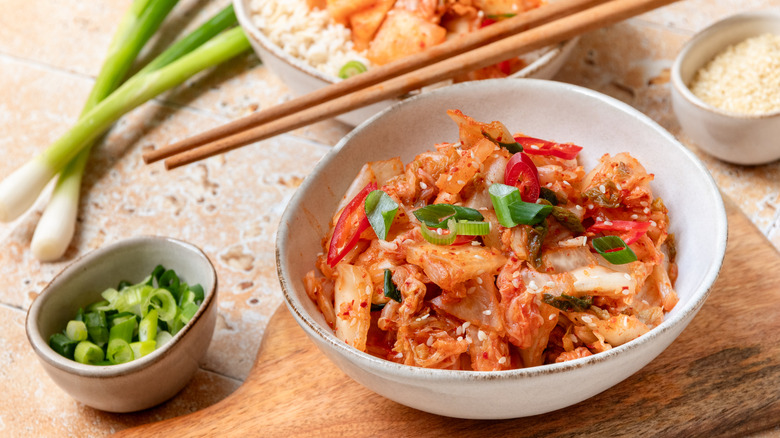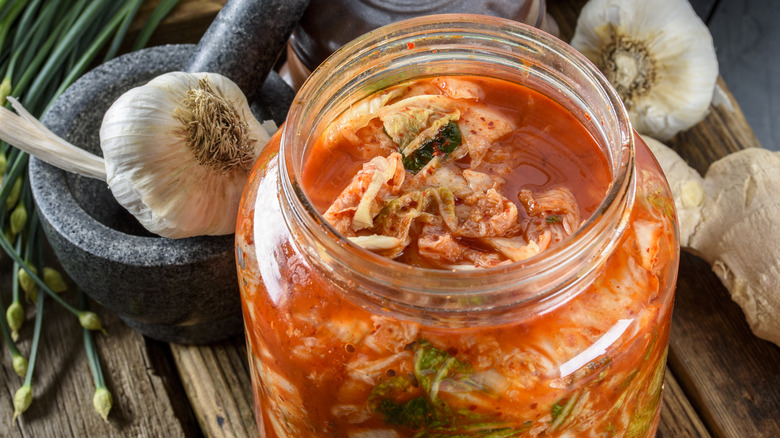The Surefire Way To Tell If Your Kimchi Has Gone Bad
A beloved Korean dish consisting of fermented vegetables and potent seasonings, kimchi is adored for its collection of bold flavors. The fermentation process is a key aspect in the creation of kimchi, as this is what gives the vegetables in the dish their notable tang when it comes to flavor and aroma. However, this impactful flavor profile does come with one downside. Because fans of kimchi are accustomed to its potency, detecting spoilage can sometimes be challenging.
In this case, Healthline highlights a sign of spoilage that's relatively easy to detect. Any evidence of mold growth, which includes black or green discoloration and fuzzy textures, means that kimchi should be discarded without eating. Consuming bad kimchi can result in some unpleasant symptoms, including nausea and vomiting. Accordingly, sampling the food to determine whether it's still good is not worth the risk. Being able to accurately identify spoiled kimchi can spare you some unwanted health effects, as can these tips for avoiding food poisoning.
Avoid spoilage by storing kimchi properly
Fermentation involves the action of microbes, which feast on carbohydrates and convert them into acid. This process means that kimchi is a living food, which can impact how it should be stored. While you can keep kimchi in room temperature conditions, bear in mind that doing so means it will only last about one week. Additionally, the continued fermentation of room-temperature kimchi can alter the flavor and turn it into something unpleasant.
Based on these facts, the refrigerator is the best place for your kimchi, as cold storage can allow the food to last up to six months in some cases. For the best results, your refrigerator should range from 32 to 39 degrees Fahrenheit, and you can ensure the proper temperature range by avoiding the common mistakes people make with their refrigerators. You also want to limit exposure to air as much as possible, which can even be an issue inside the refrigerator. If you find that the kimchi ingredients aren't completely covered by the liquid they're stored in, take the kimchi and relocate it to a smaller container, making sure that veggies are fully surrounded by the delicious liquid.
Ideas for incorporating kimchi into other dishes
The best way to avoid spoiled kimchi is to use it up as quickly as possible, which means you'll need to be a little crafty in the kitchen. For instance, kimchi makes an incredible addition to vegetable soup, as it creates a multi-faceted flavor profile that goes beyond expected ingredients like stock, onions, and garlic. Kimchi can also be combined with udon noodles to make an unbelievable stir-fry dish — just keep in mind that udon noodles differ from ramen in that they're more substantial when it comes to thickness and size.
While it might seem like an unlikely pairing, kimchi also makes an excellent topping for hot dogs. Kimchi dogs benefit greatly from additional toppings like cilantro-infused cream, as well as spicy chorizo. Kimchi can even be added to mac and cheese, thereby rendering this common comfort food into a much more exciting and flavorful dish. These preparations show that kimchi is a lot more versatile than people give it credit for, which is great when you want to enjoy every last morsel before spoilage becomes a concern.


